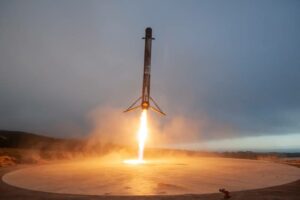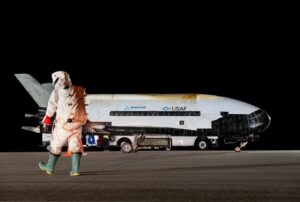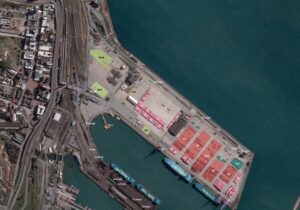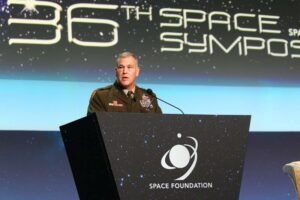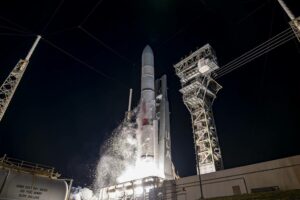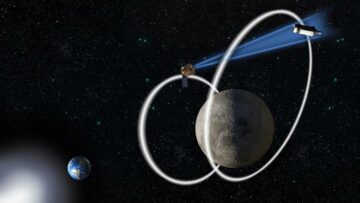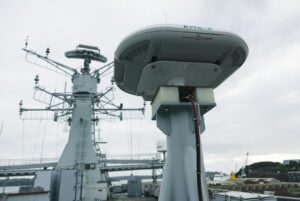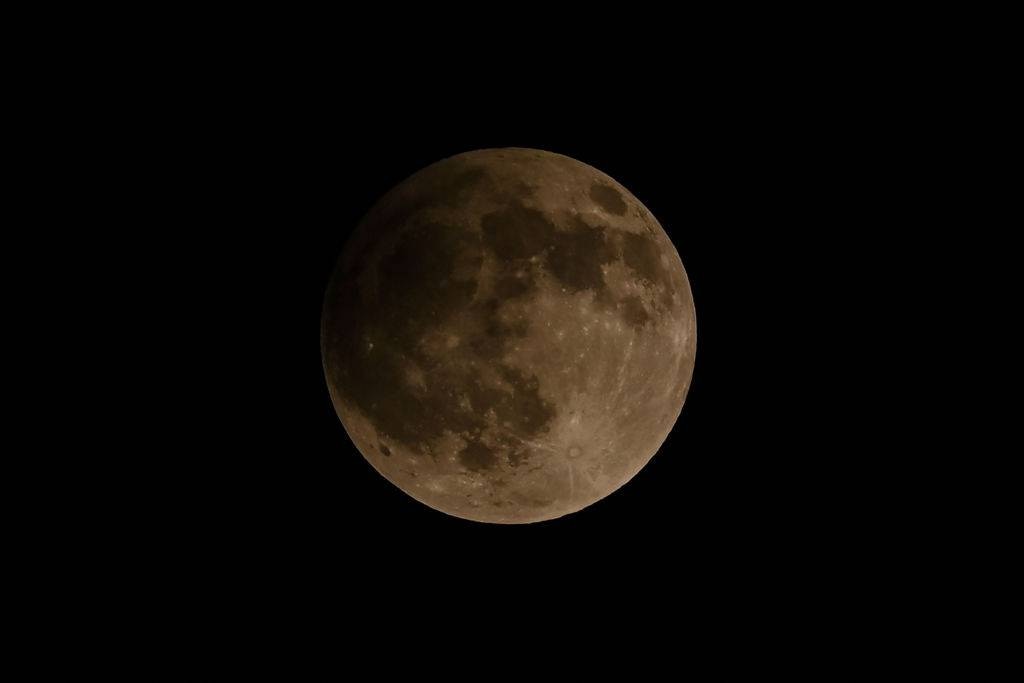
WASHINGTON — The Defense Advanced Research Projects Agency is kicking off a seven-month study of the infrastructure and baseline technology needed to develop a moon-based economy within the next decade.
Throughthe lunar architecture study, dubbed LunA-10, DARPA aims to establish an analytical framework for “rapid scientific and commercial activity on and around the moon,” between 2025 and 2035, the agency said in an Aug. 15 statement.
“A large paradigm shift is coming in the next 10 years for the lunar economy,” Michael Nayak, program manager in DARPA’s Strategic Technology Office, said in the statement. “To get to a turning point faster, LunA-10 uniquely aims to identify solutions that can enable multi-mission lunar systems.”
Those “multi-mission systems” could include dual-use military and commercial technology, like a wireless power station that offers communication and navigation capabilities, Nayak said. He likened the agency’s potential role in spurring the lunar economy to its contributions to the origin of the internet.
“Just like DARPA’s foundational node of ARPANET grew into the sprawling web of the internet, LunA-10 is looking for those connective nodes to support a thriving commercial economy on the moon,” Nayak said.
DARPA’s study comes as the U.S. and other countries — as well as commercial companies — plan missions and envision a future economy on the moon. In recent years, DARPA and the Air Force Research Laboratory have started a number of programs that explore satellite sensing and logistics in a lunar environment.
Meanwhile, the National Geospatial Intelligence Agency announced in May it is developing a Lunar Reference Frame that will provide the mapping infrastructure to support a GPS-like capability for the moon.
The DARPA effort is focused on “fusing” various infrastructure sectors that have technological overlap into hubs that could be built up in the future, as economic activity on and around the moon increases. Those sectors include: transit and mobility; energy; communications; and other “revolutionary orbital or surface infrastructure concepts.”
While the agency does not plan to fund technology development, transportation to the moon or integration with space vehicles, it will form industry teams made up of companies with expertise in lunar technology. Those teams will help identify enabling capabilities, develop an analytical framework and consider logistical and technical challenges for lunar operations.
DARPA expects the study to begin in November and continue through June 2024. The agency is coordinating with NASA, which is crafting a blueprint for scientific exploration on the moon and Mars. That work includes developing an architecture for a long-term human presence in the region.
Courtney Albon is C4ISRNET’s space and emerging technology reporter. She has covered the U.S. military since 2012, with a focus on the Air Force and Space Force. She has reported on some of the Defense Department’s most significant acquisition, budget and policy challenges.
- SEO Powered Content & PR Distribution. Get Amplified Today.
- PlatoData.Network Vertical Generative Ai. Empower Yourself. Access Here.
- PlatoAiStream. Web3 Intelligence. Knowledge Amplified. Access Here.
- PlatoESG. Automotive / EVs, Carbon, CleanTech, Energy, Environment, Solar, Waste Management. Access Here.
- PlatoHealth. Biotech and Clinical Trials Intelligence. Access Here.
- ChartPrime. Elevate your Trading Game with ChartPrime. Access Here.
- BlockOffsets. Modernizing Environmental Offset Ownership. Access Here.
- Source: https://www.defensenews.com/battlefield-tech/space/2023/08/16/darpa-to-explore-technology-needed-for-moon-based-economy/
- :has
- :is
- :not
- $UP
- 10
- 15%
- 2012
- 2024
- 2025
- 70
- a
- acquisition
- activity
- advanced
- agency
- aims
- AIR
- Air Force
- Air Force Research Laboratory
- an
- Analytical
- and
- announced
- architecture
- around
- AS
- Baseline
- BE
- begin
- between
- budget
- built
- CAN
- capabilities
- capability
- challenges
- comes
- coming
- commercial
- Communication
- Communications
- Companies
- concepts
- Consider
- continue
- contributions
- coordinating
- could
- countries
- covered
- darpa
- decade
- Defense
- Defense Advanced Research Projects Agency
- develop
- developing
- Development
- does
- dubbed
- Economic
- economy
- effort
- emerging
- Emerging Technology
- enable
- enabling
- energy
- Environment
- envision
- establish
- expects
- expertise
- exploration
- explore
- faster
- Focus
- focused
- For
- Force
- form
- Framework
- fund
- future
- get
- Have
- he
- help
- HTTPS
- Hubs
- human
- identify
- images
- in
- include
- includes
- Increases
- industry
- Infrastructure
- integration
- Intelligence
- Internet
- into
- IT
- ITS
- jpg
- june
- laboratory
- large
- like
- logistics
- long-term
- looking
- Lunar
- made
- manager
- mapping
- May..
- Michael
- Military
- missions
- mobility
- Moon
- most
- Nasa
- National
- Navigation
- needed
- next
- node
- nodes
- November
- number
- of
- off
- Offers
- Office
- on
- Operations
- or
- Origin
- Other
- paradigm
- plan
- plato
- Plato Data Intelligence
- PlatoData
- Point
- policy
- potential
- power
- presence
- Program
- projects
- provide
- recent
- region
- Reported
- reporter
- research
- Role
- s
- Said
- satellite
- scientific
- Sectors
- she
- shift
- significant
- since
- Solutions
- some
- Space
- Space Force
- started
- Statement
- station
- Strategic
- Study
- support
- Surface
- Systems
- teams
- Technical
- technological
- Technology
- Technology Development
- that
- The
- The Future
- those
- thriving
- Through
- to
- transit
- transportation
- Turning
- turning point
- u.s.
- uniquely
- various
- Vehicles
- web
- WELL
- which
- will
- wireless
- with
- within
- Work
- years
- zephyrnet



